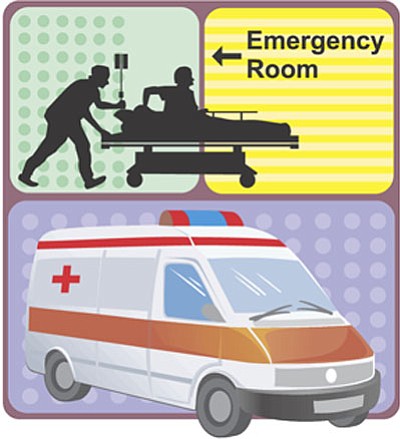BALTIMORE — Imagine you’re traveling in a different state when, suddenly, you begin to feel severe abdominal pain. Being unfamiliar with the area and wanting to avoid hefty out-of-network bills, you call your insurance company to find an in-network hospital. After receiving some medication and a few routine tests in the emergency department, you leave feeling better.
A month later, you receive a bill from your insurance company: $1,600 in out-of-network charges!
This actually happened to businessman Doug Moore. And it’s happening to hundreds of thousands of others across the country, due to a flaw in health insurance markets. Fixing this shortcoming would save patients from unexpected, ruinous bills and enable consumers to make rational economic choices about their health.
The problem is that insurers contract with hospitals and emergency room doctors separately. So even if a hospital is in-network, the doctors in the ER might not be. Patients rarely realize this. And even if they did, there’s little way for patients to check if the ER doctors are covered by their insurance plan.
The resulting out-of-network charges are stunningly expensive— and common. More than one in five patients who visited in-network ERs were treated by out-of-network physicians, according to a study published in the New England Journal of Medicine. Their average bill was over two and a half times higher than what they would have paid for an in-network physician. For some patients, surprise out-of-network ER bills can hit upwards of $19,000 for a single visit to an in-network hospital.
These surprise costs would devastate most American families. Indeed, nearly half of Americans would not be able to afford an ER bill of just $400 without borrowing money or selling some of their assets, according to the Federal Reserve.
According to the study, hundreds of thousands of families are facing ruinous out-of-network bills that they have no way of foreseeing or preventing. That’s tragic. It’s also bad policy.
To control healthcare spending, patients need to know which providers and treatments are in-network, so they can seek care accordingly. They can’t do that if insurers keep them in the dark about which ER doctors are covered, and then hit them with surprise bills.
Insurers could fix this problem by negotiating with hospitals for a bundled reimbursement rate that includes ER services. Hospitals would then conduct their own pay negotiations with ER doctors. As a result, hospitals would compete with one another to employ the best doctors and offer insurers favorable rates.
And insurers would compete for consumers’ business based on premiums and the breadth of hospitals— and thus ER departments— that are covered by the plan.
Patients could easily see which hospitals are covered by which plans, and make their own decisions about where to seek care.
That would put an end to billing practices that shock consumers with hefty tabs and it would improve consumer choice, putting downward pressure on rising healthcare costs.
Wayne Winegarden is a senior fellow in business and economics at the Pacific Research Institute.
